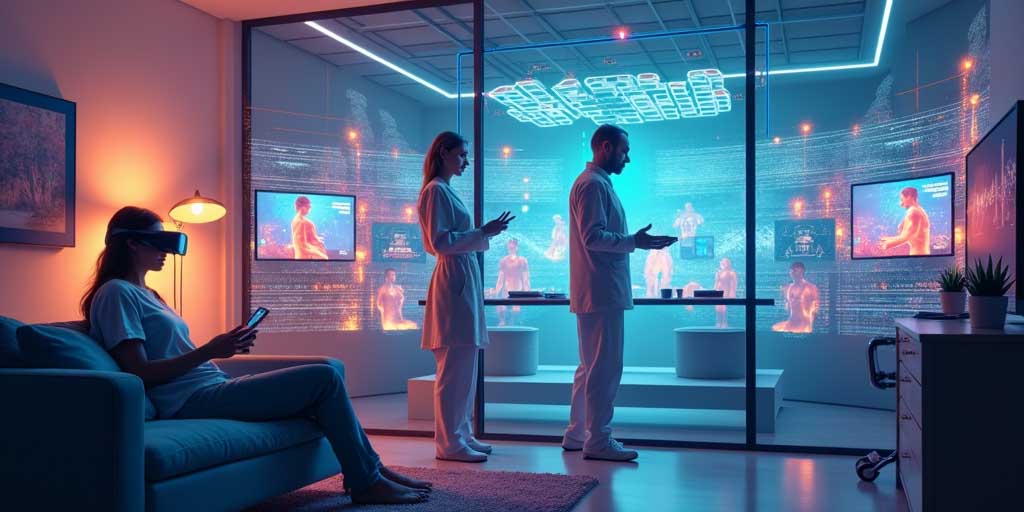Exploring the Top Healthcare Innovations Transforming Patient Care in 2025
The healthcare sector has always been at the forefront of technological and procedural innovations, and as we advance into 2025, several groundbreaking developments are poised to redefine patient care. This year, we are witnessing an acceleration in the integration of digital technologies and biotechnologies, which promises to enhance the efficiency, accessibility, and personalization of healthcare services.
1. Telemedicine 2.0: Advanced Remote Care Solutions
One of the most significant transformations in healthcare delivery has been the evolution of telemedicine. Initially popularized during the global health crises of the early 2020s, telemedicine has advanced beyond simple video consultations. In 2025, we see the integration of AI-driven diagnostics and virtual reality (VR), offering patients in remote locations access to specialist consultations and immersive therapy sessions. These technologies not only make healthcare more accessible but also greatly reduce the need for physical travel, saving time and resources for both patients and healthcare providers.
Example:
A notable application is the use of VR in cognitive behavioral therapy, where patients can confront phobias and manage anxiety disorders from the comfort of their homes, guided in real-time by therapists through virtual environments.
2. Personalized Medicine Through Genomics and AI
The field of genomics has made leaps and bounds, enabling personalized medicine to flourish in 2025. By analyzing a patient’s genetic profile, healthcare providers can predict susceptibility to specific diseases, understand the patient’s response to various drugs, and tailor preventive and therapeutic interventions accordingly. AI complements this by sifting through massive datasets to identify patterns and treatment outcomes, thus refining treatment plans to suit individual genetic profiles.
Example:
In oncology, genetic profiling combined with AI algorithms can predict the effectiveness of chemotherapy options, thus sparing patients the ordeal of going through ineffective treatments and experiencing unnecessary side effects.
3. Wearable Health Technology: Continuous Monitoring and Predictive Insights
Wearable technology has progressed beyond fitness tracking. In 2025, these devices are equipped with sensors that monitor a wide array of health indicators such as blood pressure, blood sugar levels, and even markers of neurological health. This continuous monitoring enables the early detection of potential health issues, often predicting acute events like strokes or heart attacks before they occur, thereby saving lives through timely medical intervention.
Example:
Smartwatches now can detect irregular heartbeats and automatically alert the user and their healthcare provider, facilitating immediate response and preventing potential cardiac events.
4. Robotic Surgery: Enhanced Precision and Reduced Recovery Time
Robotic surgery has been part of medical practice for several years, but in 2025, it has become more refined and widely accessible. These robotic systems provide surgeons with unparalleled precision, significantly reducing human error and improving patient outcomes. The minimally invasive nature of robotic surgeries means shorter hospital stays and faster recovery times, which is a considerable advantage for both healthcare systems and patients.
Example:
The use of robotic systems in knee replacements has dramatically improved the precision of the surgery, leading to better alignment and functionality of the knee post-surgery, and consequently, higher patient satisfaction.
5. Blockchain for Health Data Security and Sharing
Blockchain technology is increasingly employed to secure health data and facilitate its sharing among authorized professionals. In 2025, blockchain ensures that patient records are tamper-proof and easily accessible by any authorized healthcare provider, regardless of the geographical and institutional barriers. This not only enhances the security of sensitive information but also improves the continuity of care as patients move across the care continuum.
Example:
A patient visiting a specialist in another state can have their complete medical history instantly and securely accessed, ensuring that the care provided is both informed and efficient.
6. Augmented Reality (AR) in Patient Education and Surgical Planning
Augmented reality is transforming patient education by providing interactive, 3D representations of health conditions, treatment procedures, and potential outcomes. This helps in demystifying complex medical information, thereby empowering patients and improving their compliance with treatment protocols. In surgical planning, AR allows surgeons to overlay diagnostic images on the patient’s body during the procedure, improving accuracy and outcomes.
Example:
Before undergoing a surgical procedure, a patient can use an AR application to see how the surgery is performed, what the recovery process involves, and how the affected organ looks before and after the surgery.
Conclusion
The healthcare landscape in 2025 is characterized by these exciting technological advances that promise not only to improve the quality of healthcare services but also to make them more personalized, secure, and patient-centric. These innovations are not just transforming patient care; they are setting a new standard in the healthcare industry, making it more equipped to handle the challenges of the future. As these technologies continue to evolve, they will undoubtedly usher in new possibilities for patient health and wellness. Embracing these innovations is essential for healthcare providers aiming to offer cutting-edge care and for patients seeking the best outcomes in their health journeys.
